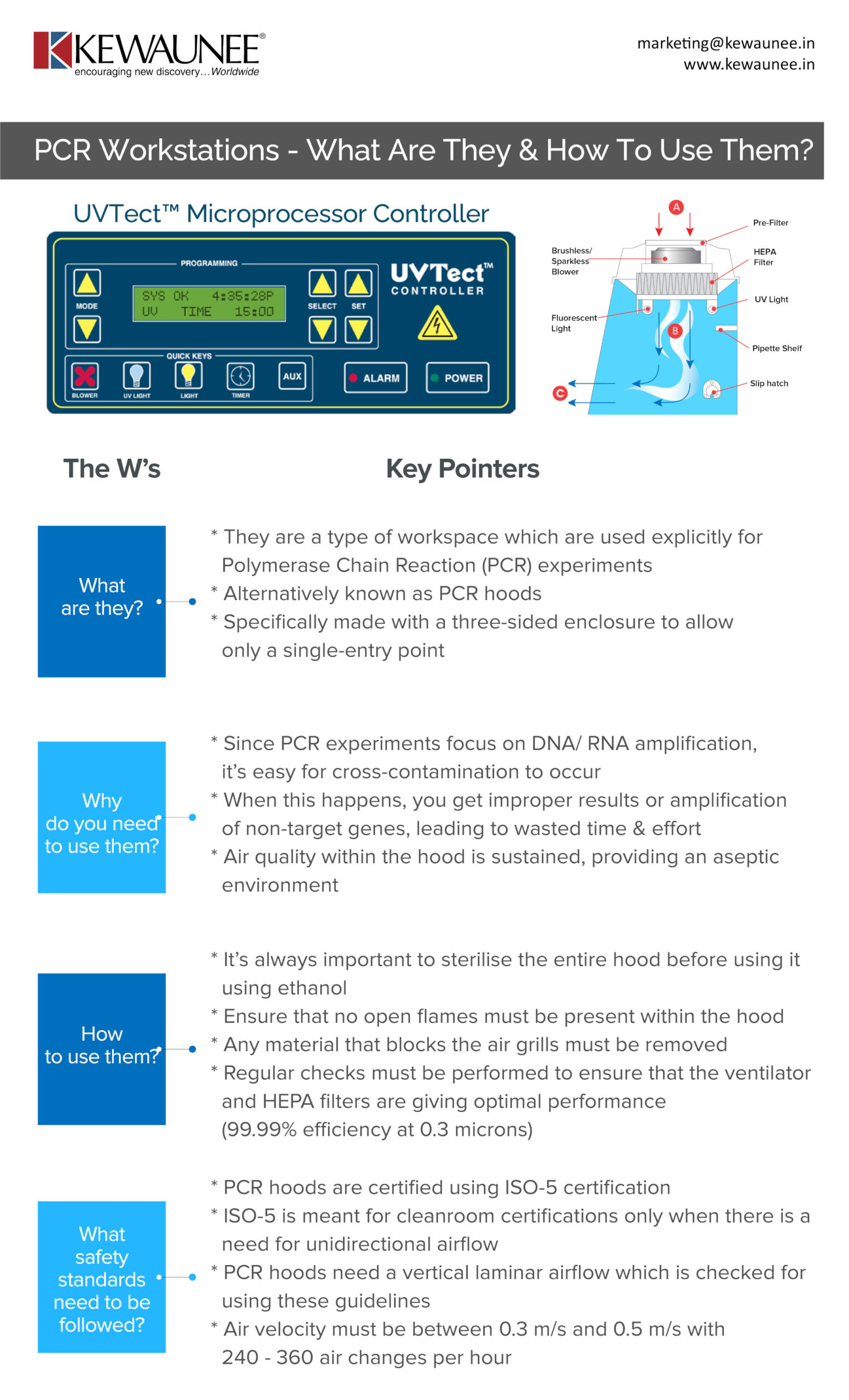PCR Workstations — What are they & how to use them?
PCR workstations are a much-needed tool in any biological laboratory these days. Often, they’re confused with biosafety cabinets and other laminar hoods. Still, the biggest differentiator is that they’re meant explicitly for PCR purposes. This is to prevent any cross-contamination in critical experiments such as RNA/ DNA identification and amplification.
At Kewaunee International, we have a range of PCR workstations with varying sizes to fit your laboratory needs. If you’re looking to elevate your experiments, you can view the products here.
| The W’s | Key Pointers |
| What are they? |
|
| Why do you need to use them? |
|
| How to use them? |
|
| What safety standards need to be followed? |
|
Comments are closed.











